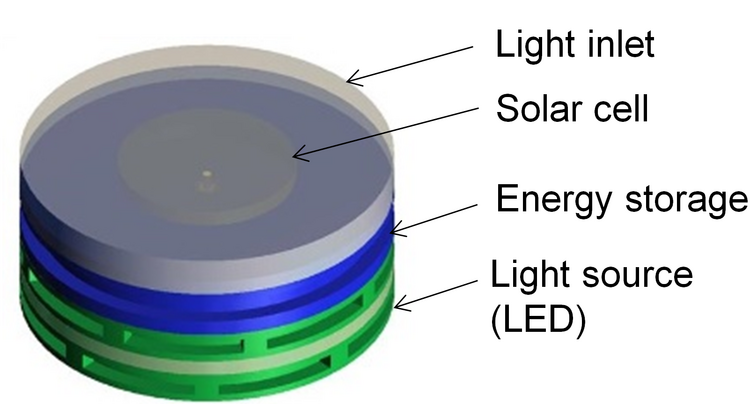Tailored Light – Intelligent photoelectric surface made of light emitting modules

| E-Mail: | uliana.dudko@ita.uni-hannover.de |
| Year: | 2017 |
| Date: | 01-01-20 |
| Funding: | Lower Saxony |
| Duration: | 01/2017 – 01/2020 |
| Is Finished: | yes |
| Further information | https://www.tailored-light.uni-hannover.de/ |
The progress over the last decades in miniaturizing chips, wireless data transfer technologies and low-power consumption electronic devices has made it possible to design component-integrated autonomous sensors. These networks have a big potential for widespread use in maintenance prediction of manufacturing equipment, in intelligent building management systems and energy saving smart grids.
In conventional wireless communication technology, the gradual saturation of the RF spectrum by using hundreds of 2.4 GHz devices in one building leads to parasitic induction and therefore to interference and susceptibility issues. Utilization of light as a wireless communication channel is a good alternative to traditional RF technology in the case of high density of sensor nodes and for applications where electromagnetic waves are unwanted or unsuitable (hospitals, chemical plants).
The goal of the project is to develop an intelligent fully optical sensor module which is able to take measurements and emit information in the form of time-tailored light when requested. The power autonomy is intended to be achieved by energy harvesting, where the ambient optical energy is converted into electrical energy by a solar cell.
A matrix-like arrangement of several such modules comprises an intelligent surface which can be used as an individually adapted sensor system. The attached sensors can be designed for a wide range of measurements: temperature, strain, structure-borne noise, etc. As a read/write unit, a smart phone with an individually programmed app can be used to transmit a data signal through the built-in LED and to read the optical information from the modules through the built-in camera.




















